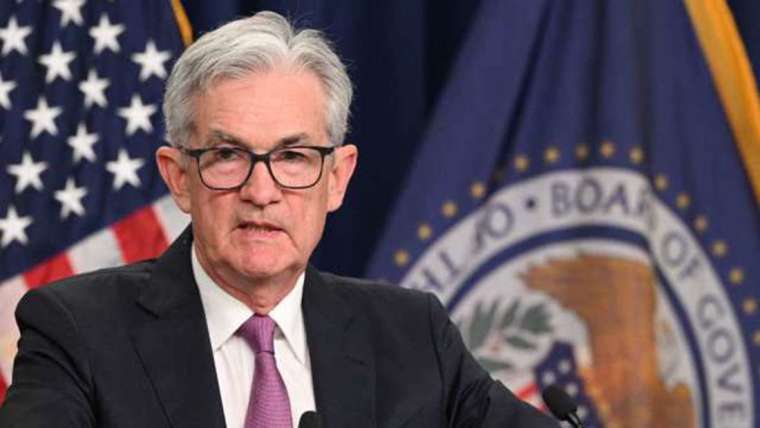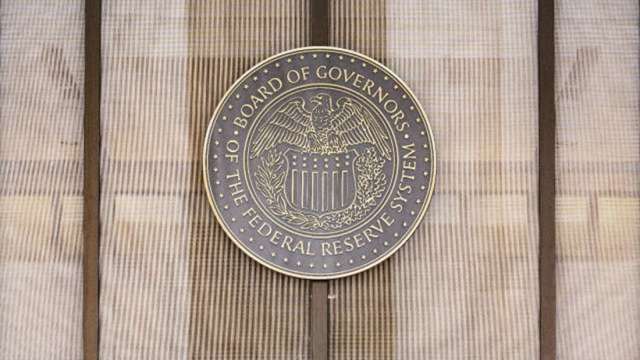On the US interest rate outlook, Wall Street investment banks unanimously agree that the Federal Reserve (Fed) will continue to raise interest rates next year, but views on how much the interest rate will go up final and whether it will cut interest rates next year are quite different.
It also highlights how complicated the Fed’s job is, with Fed Chairman Jerome Powell at the crossroads of battling stubborn inflation and assessing whether recession and rising unemployment could turn into bigger concerns.
The current consensus on Wall Street is that the Fed could raise interest rates by 2 yards (50 basis points) in December, bringing the benchmark interest rate to 4.25-4.50%, and then hike the rate around 5% before March next year. . Here are the opinions of various investment banks:
- UBS: A total of 7 yards (175 basis points) of interest rate cuts next year
- Deutsche Bank: Cut interest rates by 4 yards (1 percentage point) at the end of next year
- Nomura: Terminal rate is 5.75%, then it will drop to 5%
- Barclays: 3 yards (75 basis points) cut in interest rates between September and December next year
- Morgan Stanley: terminal rate at 4.75%
- Bank of America (BofA): cut interest rates by 4 yards in December next year
- Goldman Sachs and Wells Fargo: terminal rate is 5.25% and will not cut interest rates next year
- JP Morgan: Terminal interest rate is 5% and won’t cut interest rates next year if it stays at this level
- Citi: terminal rate will appear in mid-2023, from 5.25 to 5.5%, and will remain at this level until the end of next year
Anna Wong, chief US economist at Bloomberg, said Powell has made clear on many occasions that the Fed has learned an important lesson from the 1970s: don’t cut rates too soon even in a recession. He said the most powerful condition for the Fed to cut interest rates next year will be for the inflation rate to fall below 3%, but Bloomberg’s simulated economic model shows there’s a 68% chance expect the inflation rate to be between 3 -5% next year.
UBS, the Wall Street bank most likely to cut rates, sees a “hard landing” for the US economy, with unemployment rising above 5% in 2024.
UBS said history shows the Fed often cuts interest rates quickly after unemployment sets in, with only four and a half months between the peak of the rate-hiking cycle (aka the terminal interest rate) and the rate cut.
For example, Fed Chairman Paul Volcker in 1984 went from raising rates more than 20 yards to cutting them in just six weeks, and Fed Chairman Alan Greenspan in 1989 kept rates high for just three months. of nearly 700 basis points of interest rate cuts, while in 1995 he waited 25 weeks to start cutting interest rates.
The extent of labor market weakness will affect the outlook for US interest rates. In the 16 cycles of interest rate hikes since 1954, the average unemployment rate when the Fed last raised interest rates was 5.7%, according to Bank of America analysts. The US unemployment rate was 3.7% in October.

(Photo: AFP)
Deutsche Bank, which was the first to predict a recession, believes the Fed could change course when the unemployment rate climbs to 5.5% and inflation dips to just above 3%.
But increasingly Fed watchers believe the Fed will take a firm hawkish stance. Economists like Goldman Sachs Jan Hatzius said this week that after the Fed hikes interest rates to 5.25% next year, it will hold rates of interest at that level through the end of next year.
Morgan Stanley argues that the US economy will avoid a recession next year and the Fed will wait until December next year to start cutting interest rates: “High inflation will keep the Fed on hold for a while.”
Piper Sandler analysts said this week that the Fed would need to see the following five phenomena before it can change policy:
- Inflation excluding food and energy to head towards 2%
- Price expectations falling
- financial conditions tighten
- The labor market has weakened significantly
- Reserve more time to wait for political fermentation
Piper Sandler analysts Robert Perli and Benson Durham said the Fed’s rate-hiking cycle, which began in March this year, is only eight months old.The most likely scenario is that the Fed won’t have a clear understanding until March next year whether rate hikes during this period will be enough to curb inflation。
(This article is not open to reprint partners)


